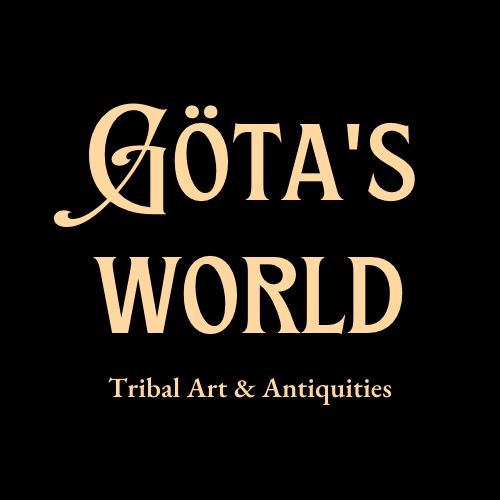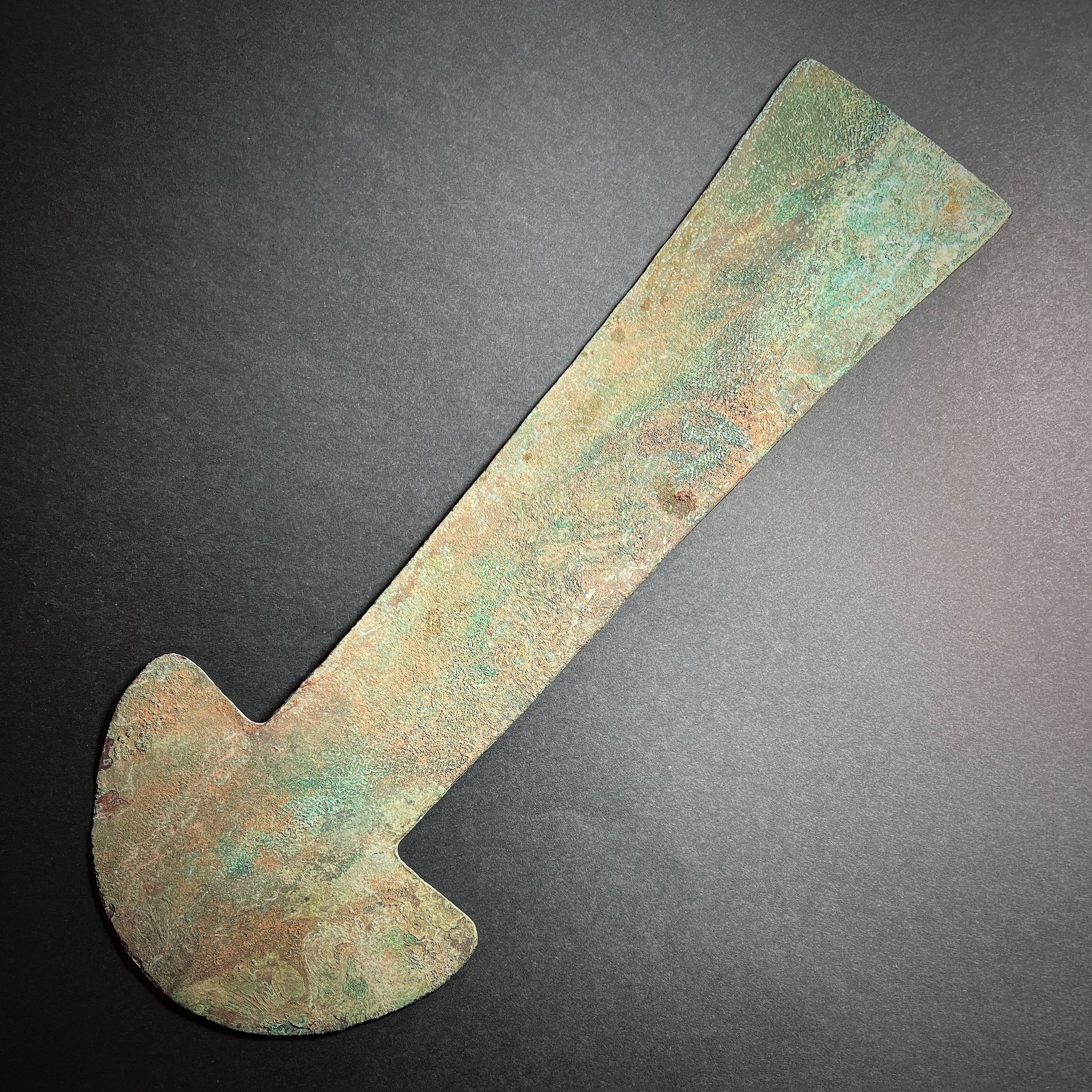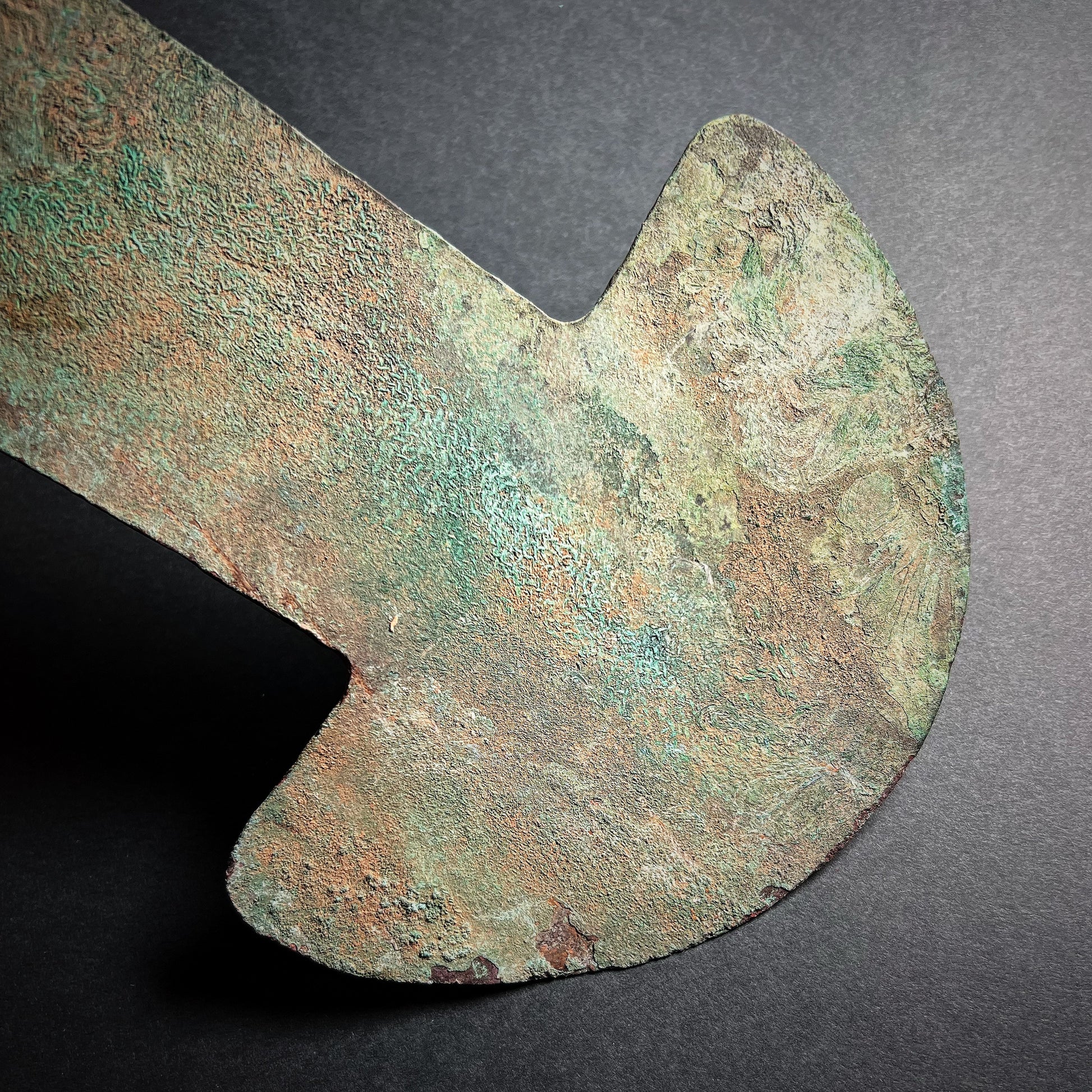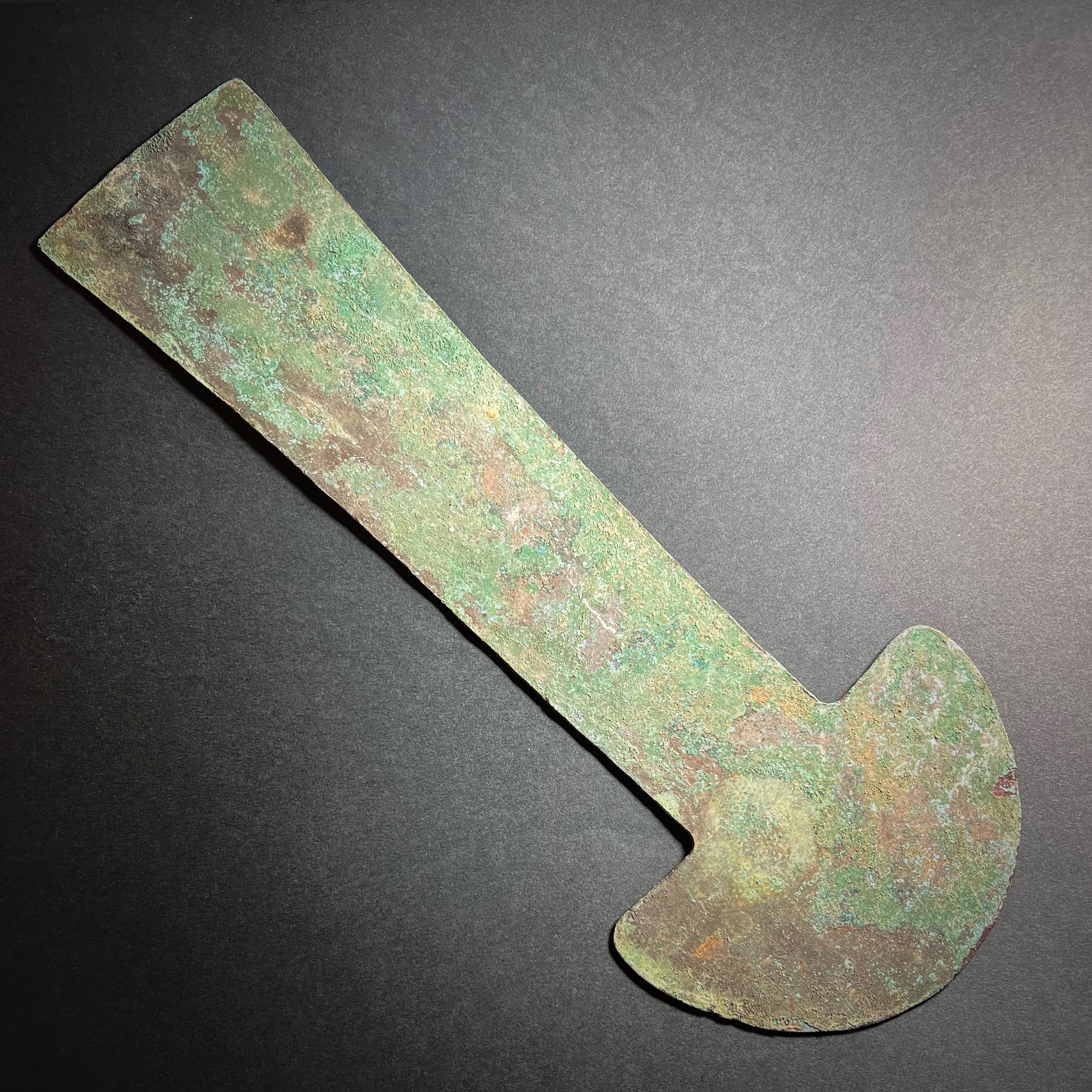Chimú Ceremonial Copper Alloy Knife Tumi
Chimú Ceremonial Copper Alloy Knife Tumi
Couldn't load pickup availability
Pre-Columbian Era, Chimú Culture, c. 800-1470 AD, Moche Valley, Trujillo, Peru
This exceptional and massive Chimú sacrificial tumi, crafted from thin arsenical copper, is a striking example of the ceremonial blades used in ancient Andean rituals. Featuring a wide trapezoidal shaft and an elegant crescent-shaped cutting edge, this finely made knife would have been placed in a mummy bundle as a votive offering, ensuring its owner's preparedness for the afterlife.
The tumi held deep spiritual and ritualistic significance across the pre-Columbian cultures of the Peruvian coast, including the Moche, Sicán, Chimú, and Inca civilizations. Most famously, these knives were used in blood sacrifices, often depicted in Moche iconography, where priests are shown using the tumi to slit the throats of human offerings. Among the Inca, these crescent-bladed knives played a key role in the Inti Raymi’rata festival, a sacred harvest celebration honoring the Sun God. During this elaborate ritual, a High Priest would sacrifice a pure white or black llama, extracting and interpreting its entrails to foresee the fate of future harvests before fully incinerating the remains.
Beyond its ceremonial function, the tumi also served as a surgical tool. In ancient Andean medicine, it was instrumental in cranial trephination, an advanced surgical technique in which a hole was drilled or scraped into the skull to treat head injuries, cranial fractures, or neurological conditions. Unlike the larger, ornate ceremonial tumis, these surgical knives were smaller, designed for precision and functionality.
A masterpiece of Chimú metallurgy, this tumi embodies the technological and spiritual achievements of ancient Peru. Whether as a symbol of ritual power, divine sacrifice, or medical ingenuity, this artifact is an extraordinary piece of history—perfect for any collector or enthusiast of pre-Columbian art and Andean culture.
Good condition. Age-related wear. Heavy green surface patina and encrusted mineral deposits. Light remains of ancient textile fragments and impressions on the surface. Size approx. 37,5cm x 9,0cm (blade 14,0cm) x 0,2cm.
Provenance: Swedish private collection
For a similar examples see:
Tumi (knife), Princeton University Art Museum, Accession number: y1990-43 (https://artmuseum.princeton.edu/collections/objects/33453)
Tumi, Virginia Museum of Fine Arts, Accession number: 2018.269 (https://vmfa.museum/piction/6027262-155843176/)
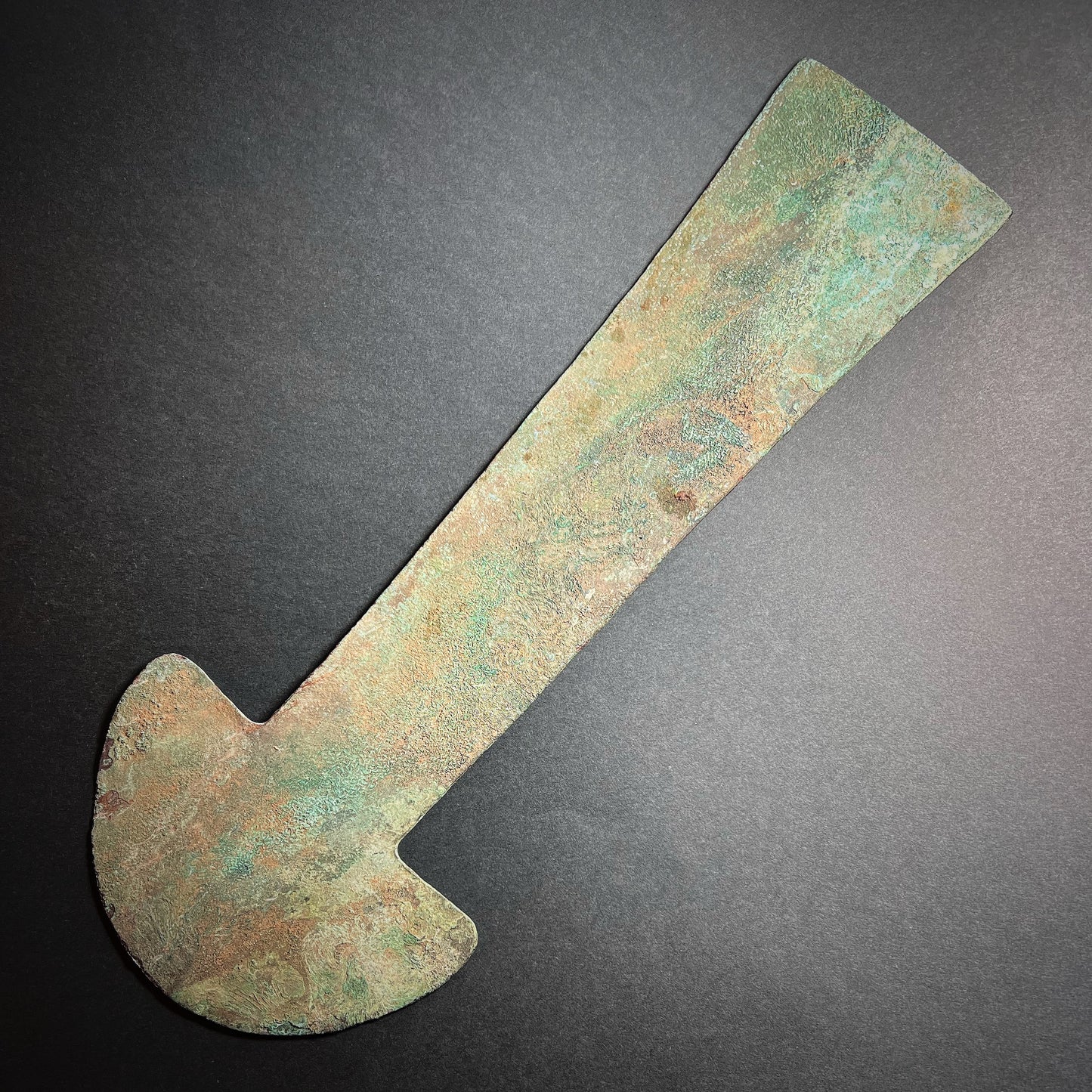
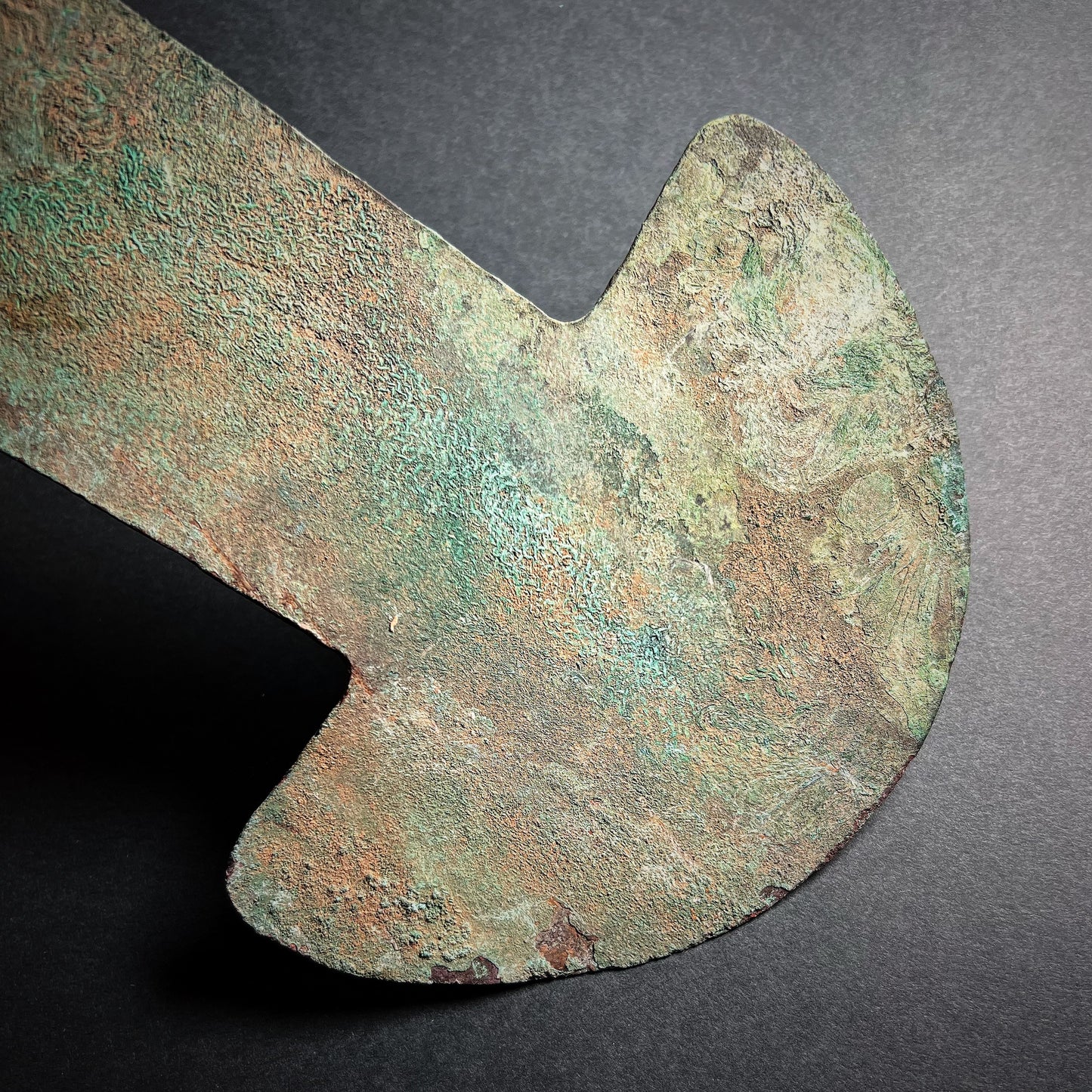


-
Shipping
The shipment will be prepared in the course of 3-5 days and dispatched via Posti Group Oyj or purchased item(s) can be picked up from our shop during the store's opening hours (Tarkk’ampujankatu 4, 00140, Helsinki, Finland). Within the Finland, all items are shipped via Posti Group Oyj unless otherwise requested. We pack the items carefully and mainly in recycled materials because we want to save nature. You will receive the tracking number for your items by e-mail.
-
Returns
Returns and exchange will be accepted within fourteen days (14) of receipt at the purchaser’s cost to include freight and packaging. Items must be returned in the same condition as when they were shipped, and will not be accepted if damaged or altered in any way. Please inform us via email (info@gotanmaailma.fi) or by calling +358408408352 before sending. We do not accept returns more than 14 days after delivery.
